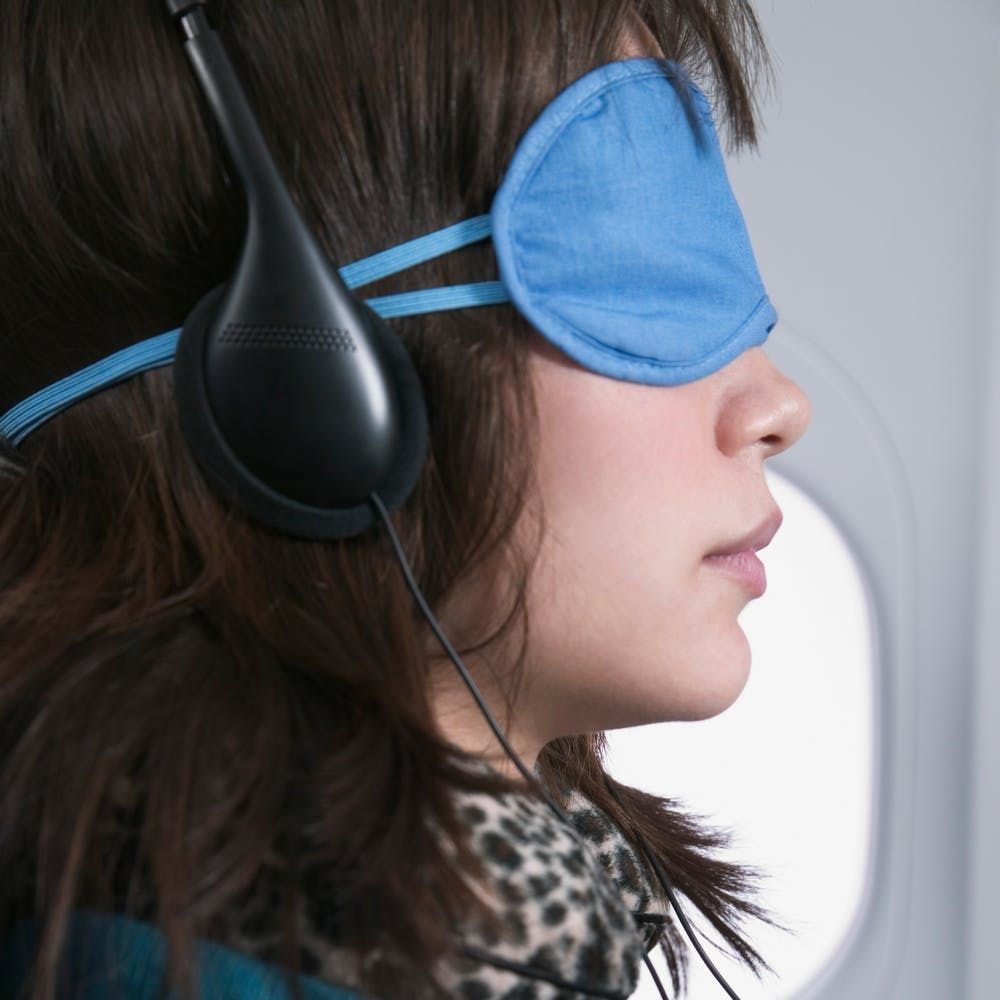Traveling by air can feel like the constant tackling of obstacles, especially during the holidays. First, you’re tasked with finding the best fares. Then you must navigate the airport, including the no-end-in-sight security line. And finally, for those of you taking overnight flights or just looking for some shut-eye, you’re challenged to get rest in a seemingly impossible sleeping environment. We spoke with Chris Brantner, founder of SleepZoo.com, about what’s required for a good night’s sleep and how to best replicate it on an airplane, so you’ll have one fewer obstacle and a lot less stress.
1. A Device-Free Setting: Although many people are inclined to turn to their phones (on-board WiFi doesn’t help) as soon as their plane takes off, Brantner says technology reduces your chances of falling asleep by “sending mixed signals to your body.” The blue light these devices’ screens emit slows melatonin production within the body, according to Brantner. When jet-setting, use your phone for white noise and not Instagram.
2. Calming Noises: Brantner says the type of “calming noise” a person prefers will vary from silence to nature sounds to white noise. “Whatever the case, you don’t want to be auditorily stimulated,” Brantner states. For this reason, listening to television or other background conversations is ineffective. Brantner suggests bringing noise-canceling headphones rather than plain old earbuds on your trek, as well as downloading white-noise apps beforehand. These work best when used together.
3. Cool Temperatures: Don’t be timid in cranking up the air conditioning. Research shows that sleeping while warm is more difficult than sleeping while slightly cold. “It’s easier for your body to warm itself up than cool itself down,” Brantner explains. If space in your carry-on permits, bring a blanket on the airplane or buy a cheap one at the airport so you can attain that perfect balance.
4. Darkness: Our bodies are naturally programmed to stay awake when it’s light outside and drift to sleep when it’s dark, Brantner explains. Depending on the time of your flight, the lights in the cabin may turn off. If not, create your own darkness with a sleep mask. Brantner says this item is “crucial for cutting out visible distractions when trying to sleep.” Plus, this obvious visible indicator that you’re sleeping (or trying to sleep) will deter people from interrupting you.
5. Comfortable Bedding: “All the environmental changes in the world will do little good if you have uncomfortable bedding,” Brantner says. He typically recommends investing in a nice mattress and pillow, but unfortunately, on a plane, a pillow is the only option — a neck pillow, more specifically. “Get comfortable anywhere,” Brantner says, “on a plane, during a layover.” The combination of the blankets and pillow will simulate a bed in the sky.
How do you doze when you’re on the go? Tweet us @BritandCo!
Brit + Co may at times use affiliate links to promote products sold by others, but always offers genuine editorial recommendations.
(Photo via Getty)
